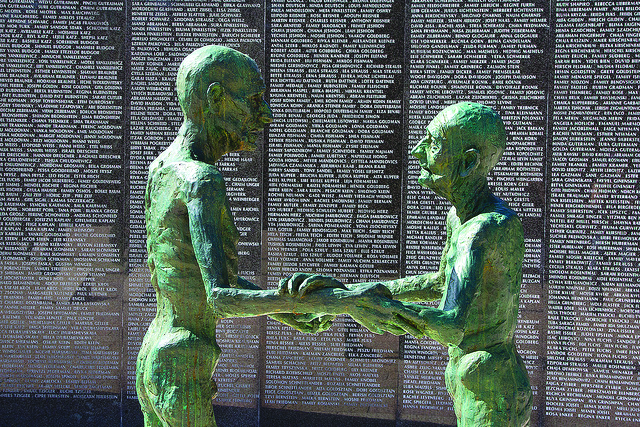By Laura McDonough
The Youngstown State University Holocaust in American Culture honors course has recently received the
opportunity to help the United States Holocaust Memorial Museum develop and test a new website in anticipation of a future exhibit.
David Klevan, digital learning strategist at the museum, designs and develops distance learning projects, Internet-based learning activities and online educational events. He said he posted to Facebook in search of help from high schools and universities to test the web design.
Helene Sinnreich, director of the Center for Judaic and Holocaust Studies, teaches the class and reached out to Klevan for the opportunity to help.
The first step was to design the website in a way that the public will be able to navigate.
“[They are testing] whether the design makes sense, whether it’s intuitive,” Klevan said.
Sinnreich and volunteers from her honors class have already participated in this first round of testing.
“They had a mock-up of the website, and the students video-conferenced with the researchers to talk about what worked and didn’t work,” Sinnreich said.
The second step is to populate the website with data that will provide information about the reality of the Holocaust as seen by the American people through smaller newspapers.
Klevan said the project is mainly about understanding what Americans knew about what was going on in Europe at the time.
“It’s about uploading articles about the Holocaust,” Sinnreich said. “They’re basically looking at predominantly local coverage of the Holocaust as opposed to The New York Times and papers people typically look at. That’s why they’re creating this site that people can access on a more local level.”
Sinnreich said she is proud to offer this opportunity to her class.
“Usually the opportunity to work with a major research institution like this requires leaving your home area, paying to get there, and most of these major institutions give only a bare-bones kind of stipend that barely covers cost of living,” Sinnreich said. “Also it’s an opportunity to do it while you’re still in classes, scheduling your work around your existing duties.”
Her own experience as an intern with the museum in 1995 led Sinnreich to accept this opportunity on behalf of her students.
“In order for me to have an opportunity to work for the Holocaust museum, I took a year off from college. I lived in D.C., which was a wonderful experience, but at that time I was living on ramen in order to make ends meet because I wasn’t paid for the first three months at all, and then I was paid very little,” Sinnreich said.
Sinnreich said she is happy that her students have the chance to work with the museum from home.
“It’s not an easy thing to gain as an experience. I was very excited that our students were able to gain that experience,” Sinnreich said. “It’s not always easy for them to take time out of their existing lives in order to have those kinds of experiences.”
